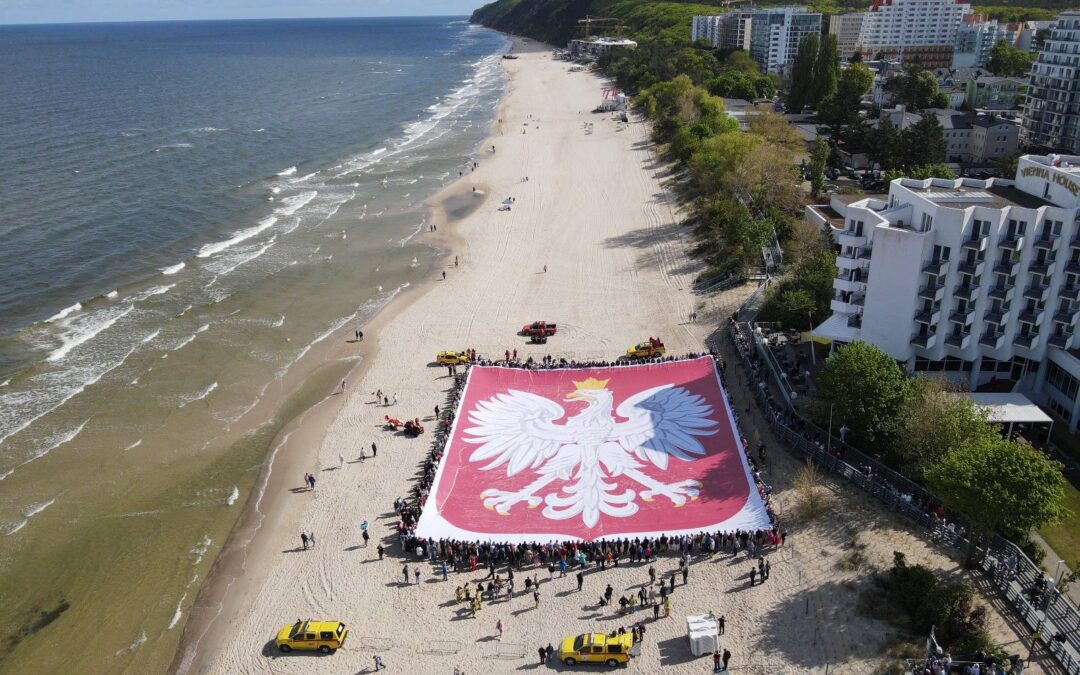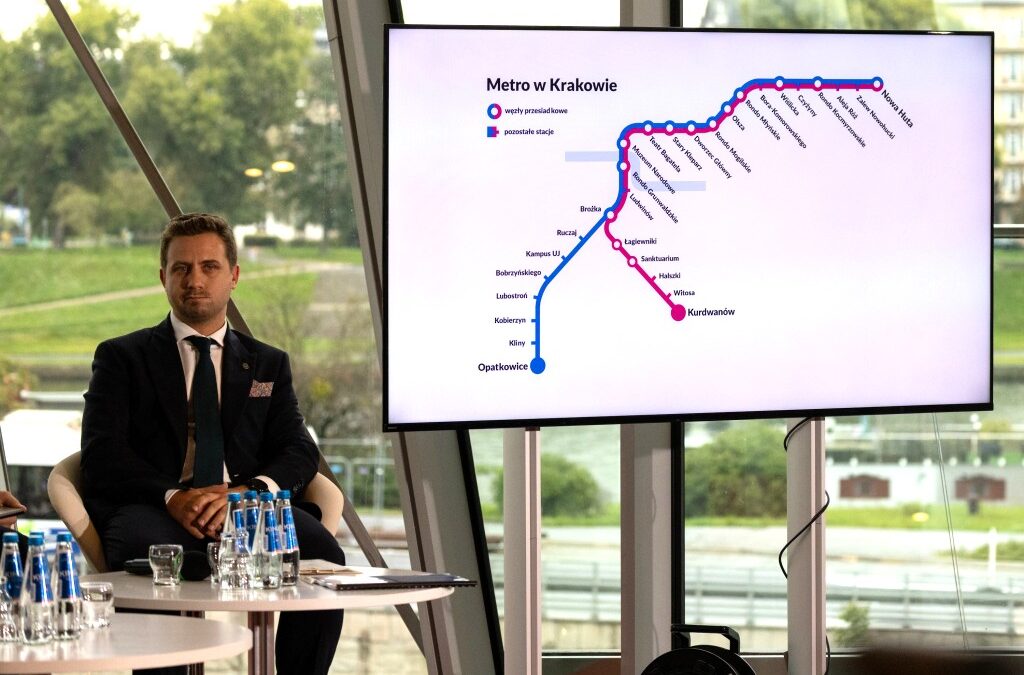Keep our news free from ads and paywalls by making a donation to support our work!

Notes from Poland is run by a small editorial team and is published by an independent, non-profit foundation that is funded through donations from our readers. We cannot do what we do without your support.
The town of Międzyzdroje has broken the record for the largest-ever Polish coat of arms in an event held to mark the anniversary of the adoption of Poland’s 1791 constitution, which was Europe’s first modern constitution and the second in the world (after only the US constitution).
The 1,200 square metre (12,917 square foot) national symbol, featuring a white, crowned eagle on a red background, was unfurled on the beach in Międzyzdroje, a popular holiday destination on Poland’s northern Baltic Sea coast.
The creation of the coat of arms, which has been confirmed as the largest ever by Poland’s Bureau of Records, was initiated by the town’s International House of Culture (MDK), which involved local schools, scout groups and sports clubs in the project.
“You are amazing and, thanks to all of you, Międzyzdroje once again turned out to be an absolutely unique place on the map of the Polish coast,” wrote mayor Mateusz Bobek on social media. In 2023, the town also broke the record for the longest-ever Polish flag, measuring 2,755.8 metres.
The event took place on 3 May, which is a public holiday in Poland marking the anniversary of the adoption of the 1791 constitution. The document, adopted by the parliament of the Polish-Lithuanian Commonwealth, is regarded as significant in both Polish and European history.
It established a constitutional monarchy with a balance of power between various branches of government and more clearly defined rights for various categories of citizens.
It also abolished the controversial principle known as liberum veto that allowed any member of parliament to single-handedly end the current session and nullify all legislation that had been passed.
The principle was used to paralyse parliamentary proceedings and stifle reforms, with foreign powers bribing MPs to influence the country’s internal politics. The liberum veto principle is considered to be one of the main reasons for the decline of the Polish-Lithuanian Commonwealth.
My new Poland history podcast is here! This week, the end of independence in the eighteenth century: anarchy in the Sejm, Enlightenment, reform, Kościuszko, May 3 Constitution, Hasidic Judaism, confederations, Catherine and Frederick, and the partitions. https://t.co/5B6gcZ6GBD
— Stanley Bill (@StanleySBill) May 1, 2021
However, the 1791 constitution remained in force for less than two years amid aggression from Poland’s neighbours, Prussia and Russia, that resulted in the partitions of 1793 and 1795 that ended the country’s sovereign existence. Only in 1918, after World War One, did Poland regain its independence.
The eagle has been a symbol of Poland since the reign of Bolesław the Brave, the country’s first king, in the 10th and 11th centuries. The current coat of arms was adopted in 1928.
After the Second World War, when Poland came under Soviet-imposed communist rule, the crown on the eagle’s head was removed for ideological reasons. It was restored after the fall of communism in 1989.

Notes from Poland is run by a small editorial team and published by an independent, non-profit foundation that is funded through donations from our readers. We cannot do what we do without your support.
Main image credit: Burmistrz Międzyzdrojów – Mateusz Bobek/Facebook

Daniel Tilles is editor-in-chief of Notes from Poland. He has written on Polish affairs for a wide range of publications, including Foreign Policy, POLITICO Europe, EUobserver and Dziennik Gazeta Prawna.



















